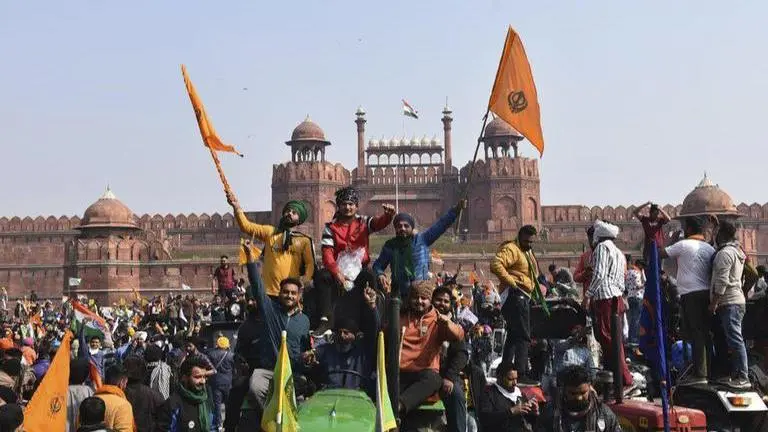Updated 6 December 2021 at 11:48 IST
Farmers' protests explained: How has the agitation affected Indian economy?
In September last year, hundreds of thousands of farmers joined hands to raise their voice against the Center's three farm laws, as per ANI
- India News
- 3 min read

In September last year, hundreds of thousands of farmers joined hands to raise their voice against the Centre’s three farm laws, which they feared would leave them at the mercy of big corporates. Since then, the farmers’ protest has not only left over 700 dead and nearly 200 detained, but has also severely affected the country's economy.
What are the three farm laws?
On 27th September 2020, President Ram Nath Kovind gave his assent to the three farm laws, triggering outrage in the farming community. The laws are - Farmers Produce Trade and Commerce (Promotion and Facilitation) Act 2020, Essential Commodities (Amendment) Act 2020 and Farmers (Empowerment and Protection) Agreement on Price Assurance and Farm Services Act 2020. On November 29, the Centre repealed all the three laws, with PM Narendra Modi urging farmers to start afresh.
What are the economic costs of farmers’ protests?
Last month, the Confederation of All India Traders (CAIT) laid bare the overall financial cost of the demonstrations. According to General Secretary Parveen Khandelwal, the protests have incurred a cost of roughly Rs 60,000 crores.
"Because of farmers' agitation country has faced the loss of around Rs 60k crore. Now when the government has repealed the farm laws, no farmers have any reason to sit on protests, roads should be cleared up this is what we believe," he said. In a discreet statement earlier, the apex trade body had revealed that the protests, and the supply chain disruptions caused, led to a business loan of nearly Rs 50,000 crore.
Advertisement
Meanwhile, the National Highway Authorities of India (NHAI) reported a loss worth Rs. 2,731 crore in Punjab, Haryana and Rajasthan since October last year. The revelation was made during the winter session of the Parliament when Union Minister of Road Transport and Highways Nitin Gadkari informed the Parliament that protests started affecting toll collection just days after it began in September 2020.
Gadkari revealed that from October 2020, protesting farmers disabled the toll plazas in Punjab and it soon spread to the states in the vicinity.
Advertisement
"It eventually spread to neighbouring states of entire Haryana and parts of Rajasthan. Overall 60 to 65 NH toll plazas were affected due to farmer agitation resulting in loss of toll collection of Rs 2,731 crore," the minister said.
The agitations also severely disrupted the supply chain, In a report, the Confederation of Indian Industry (CII) stated that around two-thirds of consignments in transit took 50% extra time to reach their destinations in Punjab, Haryana, Rajasthan and Delhi-NCR due to the protests.
This pushed logistics costs by up to 8-10%, directly hindering the country's economic recovery from COVID incurred losses. In addendum, the road blockade also triggered labour shortage in Delhi- NCR region as workers were unable to reach their workplaces.
(Image: AP)
(With inputs from agencies)
Published By : Riya Baibhawi
Published On: 6 December 2021 at 11:17 IST

